No Child 2020 is an initiative by The Irish Times providing a sustained focus on child welfare and children's issues. We explore the problems facing children in the Republic today and offer solutions that would make this a better country in which to be a child. For more see irishtimes.com/nochild2020
Children growing up in St Mary's Park in Limerick and in north Belfast – among the most deprived areas of the Republic and Northern Ireland – face similar multiple disadvantages. There is not only financial poverty but also the ongoing fallout from feud-related and sectarian violence and division.
These children are also growing up with the disappointment that promises, made by statutory actors, that their societies would be transformed by either the 2007 Limerick Regeneration Plan or an economic “peace dividend” from the 1998 Belfast Agreement – seem to have come to nought.
One striking difference: the value placed by their society on everyday play, arts and sports services for children in poverty.
While children and teenagers in the poorest parts of Limerick have almost no access to arts, play and sports facilities, their counterparts in Belfast are surrounded by them
While children and teenagers in the poorest parts of Limerick have almost no access to arts, play and sports facilities, their counterparts in Belfast are surrounded by them. Hugely impressive is the Children and Young People Unit in Belfast City Council which says: “As a team we provide an extended play opportunities for children, in a space in which they can explore, understand and learn how to cope with their environment and the world.” Children here also access free healthcare, schoolbooks and school meals – hugely ameliorating some of the worst impacts of income poverty.
That is not to say children in the North are protected. The province has the highest rate of child poverty in the United Kingdom and concerns are growing that more than 100,000 of the poorest families in receipt of benefits face a ‘cliff-edge’ of falling incomes from March 2020.
LIMERICK
Joanne Ryan (27) and her three children – twins DJ and Troy (2) and Tyler (5) – share a small bedroom with her sister Donna (32). The adult sisters and infant twins share a double bed while Tyler sleeps in a cot bed.
Eleven people live in the two-bedroom council house in St Mary’s Park, including Ryan’s six siblings and their mother Diane (57). The front room has been converted to a bedroom for Diane and a daughter (24); three adult sons share the second bedroom and Ciarán (16) sleeps on a couch in the back room.
The children have almost no toys and nowhere to crawl or play – due to lack of space.
“When they come back from creche they either have to sit on the floor or stay strapped in their buggies,” says Ryan. “They’re very behind in everything because there’s nowhere to play. They are restricted from everything. There is no safety, nowhere for them to go. They have no bedroom or playroom or space for homework.
“There is no routine, I’ll be straight up,” she says, “because this house is too full. When they come home they start crying that they want to go back to the creche. They know they’re locked in until tomorrow and it’s crowded. There’s no peace. It’s constant stress for them too.”
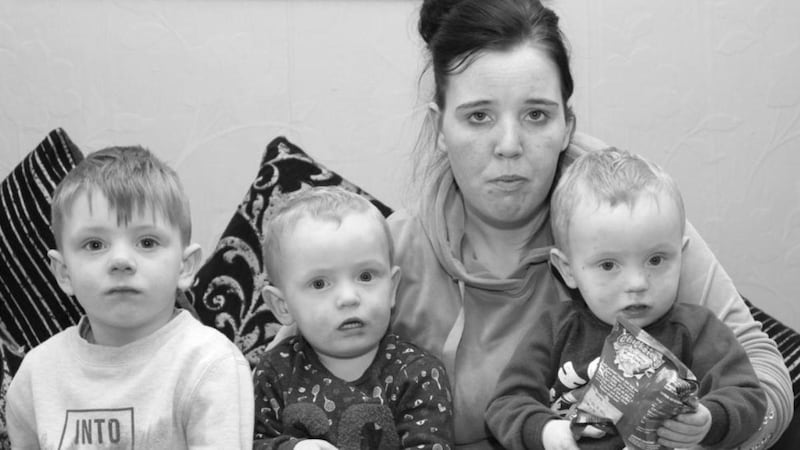
We were supposed to get the house next door, as part of the regeneration. It's empty. I'm heartbroken. All I want is a home where they can be children
Their bedroom is freezing and scarred with black mould across the ceiling. There is no central heating and the family keeps an open fire going in the back room.
“We were supposed to get the house next door, as part of the regeneration. It’s empty,” says Diane. She explains the large family had hoped their home would be knocked into next door, making a larger home.
Ryan herself has been on Limerick City and County Council’s (LCCC) housing waiting list for eight years and says she was verbally promised one of 19 new houses just allocated across the road. She didn’t get one.
“I’m heartbroken,” she says despondently. “All I want is a home where they can be children.”
St Mary’s Park is a small estate at the end of the main road on to King’s Island – around which the Shannon and Abbey rivers flow, near the north city centre. According to the independent agency Pobal, and based on Census 2016 data, it is the most disadvantaged area in the country.
Some 454 houses were built there by the then Limerick Corporation in 1935 to house the city’s poorest households. By the 1980s severe social problems – compounded by drug-related crime and feuding – were emerging across the city’s four most disadvantaged estates – Moyross, Southill and Balinnacurra Weston as well as in St Mary’s Park. All are part of an ongoing regeneration project.
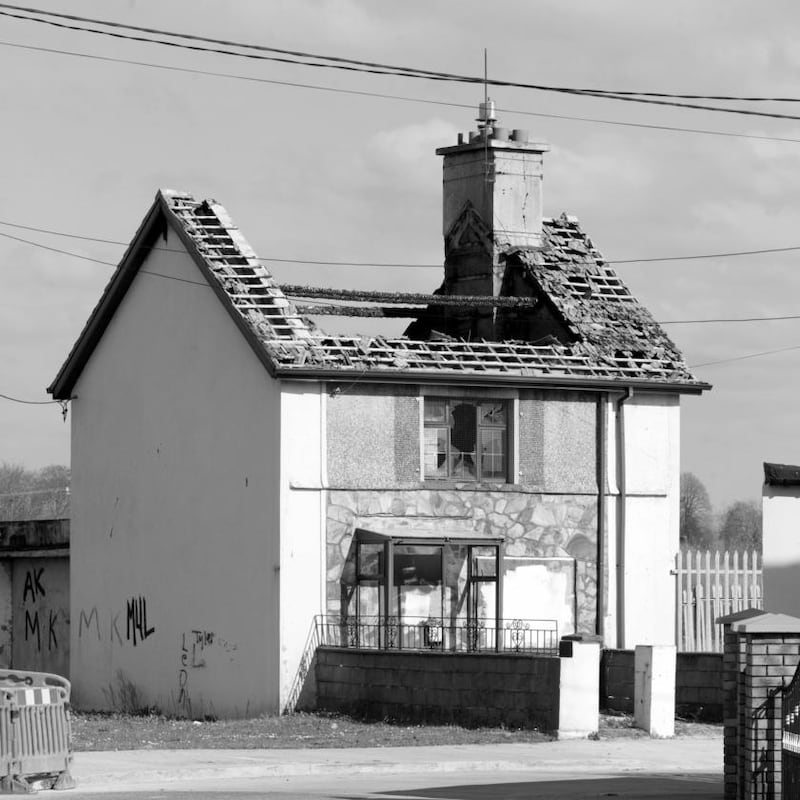
St Mary’s Park is “like a rural village within a city” says Maeve Gordon, director of development project St Mary’s Aid. Its peripheral location – there’s one road in and one road out – multigenerational poverty and a fear through the worst years of gang-related feuding of venturing too far from the island, have created an isolationism among many residents
“No one should underestimate the strength of the bonds between people here, going back generations,” says Gordon. “It is great, but it can mean people are less willing to mix, or engage with the outside. Some families are very insular; stick to what they know. Creating change there can be very challenging.
“A high proportion of the population in St Mary’s are dependent on welfare and, to be honest, some are quite happy, tipping along,” says Gordon. “When you are so far away from the work economy, whether because of low literacy, lone parenthood, disability or because no one has encouraged you to believe you can have a good job or a career, sticking to what you know is a kind of comfort zone.
“How to change that? Early intervention. We really need to focus time, energy, resources and invest in the children – to change it for them.”
Melinda Hughes, manager of the local Barnardo’s based in St Mary’s national school, describes a “deep disappointment”, even cynicism, that the ambitious promises of 2007 contained in the €3 billion Limerick Regeneration Plan for the four most troubled estates remain largely undelivered.
The plan for St Mary’s was that all the houses would be demolished and more built. There would be an equine centre, fishing piers, a marina, a ‘village centre’ with shops and a health centre, youth clubs, playgrounds and tree-lined avenues.
Recession saw the entire plan drastically pared back. The Limerick Regeneration Agency closed and the project was handed over to the local authority.
Horses graze among more than 100 demolished, burned-out and boarded-up homes. There is no youth club, sports centre, playground or shop
With a comparatively tiny budget of €253 million, LCCC published its Limerick Regeneration Framework Implementation Plan focused on new-builds, refurbishments and infrastructure. The council says it is “disingenuous” to refer back to the 2007 plan “as it is no longer relevant” but there is little doubting the let-down and anger residents feel that hopes raised so high were dashed.
Today, horses graze among more than 100 demolished, burned-out and boarded-up homes. A total of 346 of the original houses remain occupied – many in disrepair. The council says a programme of upgrading and insulating all homes is 50 per cent complete. There is no youth club, sports centre or playground – though the council says plans are progressing for a playground. There are no shops. The population has fallen by almost 40 per cent in 10 years – from 1,211 in 2006 to 759 in 2016. It is a bleak landscape.
On key indicators things have got worse. Male and female unemployment rates were lower 13 years ago at 49.8 per cent and 32.2 per cent. Now they are 69.4 per cent and 40.4 per cent.
Far fewer children (64.3 per cent) were in lone-parent families in 2006 compared with 77.2 per cent now. Educational attainment has improved a little. While 55 per cent of adults had a primary education only in 2006, some 50 per cent do now and just 2 per cent had a third-level qualification then, compared with 2.3 per cent now.
Residents say they love living there, citing “community” and “beautiful neighbours who’ll always salute you”. All add, however, how “tough” it is to raise children here. Nobody mentions their own financial struggles, highlighting instead concerns about safety and lack of facilities for children.
Valerie Liston (39) has daughters aged 18 and 21, a son aged 11 and a 10-month grandson. She praises the nearby Limerick Youth Service – a Garda diversion programme working with young people at risk of criminality – as “brilliant, but they’re only for the older kids.
“Barnardo’s are very good with the breakfast club and the summer camps. But other than that there’s nothing,” she says. “If that doesn’t change the crime rates are only going to go up and up because the kids just go hanging with the older boys, robbing cars. I don’t want that for my son.”
Michael Desmond (36), unemployed after several prison sentences, is almost a voice of warning. He recounts leaving school aged 12 and taking heroin from the age of 16.
“I started robbing when I was eight because my brother brought me. There was nothing else to do and we had no money. When you hadn’t money for tackies [runners] he’d tell you: ‘Put a pair of tackies on your feet and walk outside the door.’ It’s just the way it was.
“The likes of us didn’t go to college. I spent 16 years in and out of jail and I got sick of it. My mother, she was going too old. I hit rock bottom with drugs six year ago and said: ‘That’s it. Never again.’” He is now clean, he says.
“I got out of prison last time and went for four interviews for a cleaner job and they laughed at me. You can’t get work with previous [convictions].”
Last summer he helped repaint the old handball alley. He says he loved it. “It was something to do.”
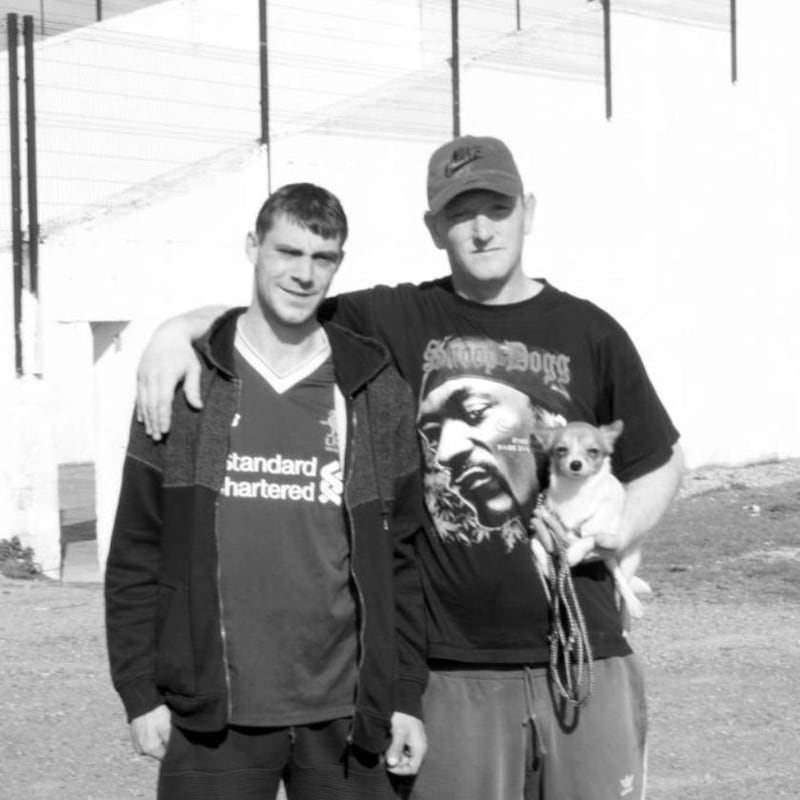
Barnardo’s runs a breakfast club attended by about 70 children each morning. As well as providing a nutritious meal the service acts as a low-threshold access to supports for children and parents should they need them.
“All the parents want their children to do well, but some have had no real experience of education themselves,” says Melinda Hughes. “Some may not have been parented well themselves. There could be trauma like domestic violence or addiction.” She is one of many who refer to the suicide rate across Limerick – especially in disadvantaged areas – which is twice the national average, and the traumatic impact on children.
“Quite often it’s one of the children’s uncles, aunts, even a sibling. The kids know that. There can be layers of tension outside school that are enormous.”
For children up to age five the King’s Island community creche operated by the North Limerick Family Resource Centre (NLFRC), provides subsidised childcare and preschool education for 90 children from St Mary’s and neighbouring areas – also very disadvantaged. It has a waiting list of about a year.
For primary school children there appears to be nothing apart from a Friday afternoon club provided by volunteers.
We would provide arts, drama, sports and, yes, the benefits would be huge, but the funding just isn't there. So what do they do in that age-group after school?
Steve Goode, manager of children’s services with the NLFRC, agrees. He says he “would absolutely love to provide an after-school club for five- to 12-year-olds”. “We are asked for one by parents all the time. But the amount of Government funding available means we couldn’t even employ an architect to plan the space. We would provide arts, drama, sports and, yes, the benefits would be huge, but the funding just isn’t there. So what do they do in that age-group after school? Hang around and in some cases things go badly.”
Young people just out of education refer to a lack of ambition that the schools and the wider society had for them.
Shannon Casey (19), a bright, articulate young woman, says she was told three years ago by a teacher to do the Leaving Cert Applied – aimed at less academic young people who don’t intend proceeding to third level – rather than the established exam.
“That’s what we were all told. She said it would be better for me because I wouldn’t need any books.”
She has worked in cafes but is now unemployed – getting €107 a week jobseeker’s allowance, of which she gives €40 to her mother. Her address is a barrier to getting work. “The minute they hear St Mary’s Park an employer doesn’t want to know. Yes, I am angry. I’d love a job. I’d love to go back to school and do it all over again but I’d lose my jobseeker’s. I don’t know what I’ll do.”
The issues may seem complex, profound and even hopeless, agrees Sinéad Hickey manager of family support services for Tusla in Limerick, “but we can’t give up on any child”.
“I don’t think any one agency can address all the issues. I emphasise maximising the effectiveness of an interagency approach,” she says.
Tusla Mid-West has identified early intervention, parenting support, management of complex cases and enhancing resources allocation as its priorities for 2018 to 2020, and always with an eye to “efficiency” and “resources”.
This writer was unable to find any reference in statutory plans for services providing regular, free arts, play or varied sports activities for children in north Limerick. A local youth soccer team, Star Rovers, is funded by the council and attended by children from across King’s Island. An old handball alley was refurbished last year.
A 2016 report from the Arts Council finds children from poorer backgrounds are less likely to participate in arts than children in wealthier families. Cost is a greater barrier than parental education, it says, stressing access to activities such as dance, drama and visual arts as crucial to children’s social, academic and cognitive development.
For mothers such as Joanne Ryan, even a space called home for her children to play in seems an impossible dream. “I would like to go back to education, get a job,” she says. “But at the moment, to make life better would be to give my children a home.”
BELFAST
Twenty-one years after the Belfast Agreement the city has been transformed. Stylish hotels and fashionable restaurants cater to a burgeoning tourism industry. A flourishing film industry and the massively successful Titanic Quarter attest to a strong arts and heritage sector. Beautifully refurbished Victorian buildings hark back more to the city’s past as an industrial powerhouse than to its more depressing and recent Troubles. The peace dividend appears intact.
A 10-minute drive from the city centre to north Belfast tells a different story. In areas such as Ardoyne, New Lodge Road and Crumlin Road disadvantage remains endemic and signs of sectarian division persist. Punishment beatings and shootings have increased in the past five years, meted out now over transgressions related to the drug trade.
New Lodge, with its nationalist and dissident republican murals, is immediately recognisable as a Catholic enclave. Seven tower blocks officially called by such names as Maeve, Gráinne and Cúchullain have been ‘renamed’ by clearly visible graffiti across the roofs after republican hunger strikers such as Michael Devine, Patsy O’Hara and Tom McElwee. A ‘peace wall’ separates it from neighbouring Protestant area Tiger’s Bay.
Though not as grim an urban landscape as perhaps St Mary’s Park in Limerick or Darndale in Dublin, the despair experienced here by some young people is evident in another mural across the main hall of the New Lodge Youth Centre. Above paintings of young people, with boxing-glove and mobile-phone motifs, is the slogan: “Reasons to Live”. A signpost in the mural points to “hope”, “choice” and “future”.
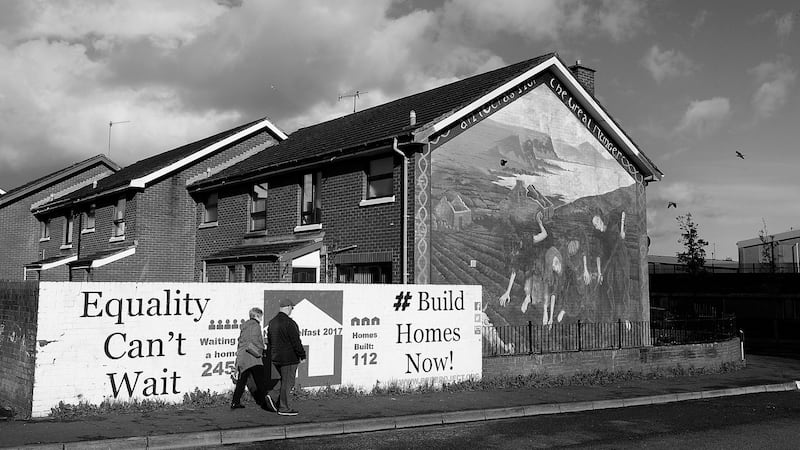
The area has some of the highest child poverty rates in Northern Ireland, and Northern Ireland, with 21 per cent of its children in poverty, has the highest rates in the United Kingdom. This compares with 20 per cent in Wales, 17 per cent in England and 16 per cent in Scotland.
A child is considered to be in poverty if they are in a household dependent on an income less than £17,206 (€10,323) – which is 60 per cent of the UK median income of £28,677 (€33,378).
According to data published last year by the respected End Child Poverty campaign, 47 per cent of children in Crumlin Road are in poverty; 46 per cent in Ardoyne area and 38.5 per cent in New Lodge Road. In Falls, in west Belfast, 44 per cent of children live poverty while in parts of Derry city it’s even higher – 48 per cent in Creggan and 49 per cent in Brandywell.
There is a lot of stress in the area with paying bills, and I know some are really struggling
Ashling Pugsley, originally from Donegal, a childcare worker and mother of two girls aged four and six, agrees New Lodge is “a very deprived area” but feels her family is “not as badly off as other people”. Her husband is an academic researcher. She is sitting in the youth centre waiting for her older daughter’s dance class to finish. It costs £2 weekly, having gone up from £1 last year when funding to New Lodge Arts, which runs the classes, was cut in its entirety by the Northern Ireland Arts Council after its funding from central government was cut.
Pugsley hasn’t had to use food banks. “But I know people who have. There is a lot of stress in the area with paying bills and I know some are really struggling.”
Her children do not qualify for free school meals, though up to 85 per cent of children across north Belfast do – compared with 30 per cent across Belfast. To qualify for free school meals a child must come from a household in receipt of benefits, or with a gross annual income of £16,190 (€18,805) or less.
Though money is tight, says Pugsley, services for children in the area are “very good”. “My daughter does drama and dance here. I’ve looked at other classes – you’d pay about £6 or £8 a class. We couldn’t afford that.”
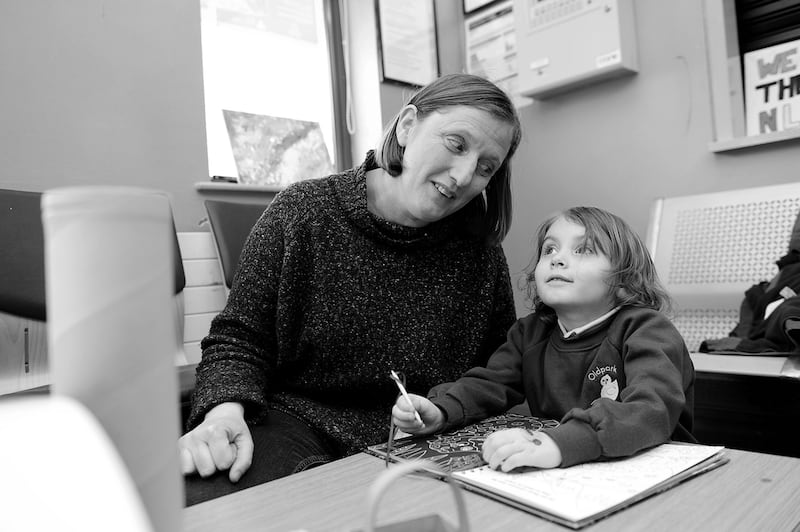
At the Belfast City Council-funded community centre on North Queen Street after-school clubs, ballet, boxing and visual arts classes are provided, all free of charge. About 1,000 children a week from both sides of the peace wall attend, says the centre’s manager, John Fleming.
“We have the Surestart running here once a week too,” he says. Surestart works with mothers with children under four – at home and in centres – in disadvantaged areas across Northern Ireland. It is free and provides ante- and post-natal support, nutritional advice, attachment support, advice on good-quality play, speech and language supports, infant classes such as baby yoga and baby massage, fathers’ groups and support for ethnic-minority families.
There are several other boxing clubs in the area, says Fleming, as well as basketball, GAA, soccer and athletics for children.
You see people getting trapped in benefits. They may not be working, they survive day to day, might get a few cans at the weekend – getting by
“New Lodge has always been a poor area, and Tiger’s Bay as well. It can become a way of life. You see people getting trapped in benefits. They may not be working, they survive day to day, might get a few cans at the weekend – getting by.
“If you’re a young person growing up in that, thinking ‘Well, that’s life, it’s good enough for my daddy,’ well you imagine a child thinking that’s all there is. . . That’s why it’s so important for them to experience other things, get a pride and achievement in sports or arts, finding something they love. Yes, definitely, what we provide here, it’s part of education.”
While some on benefits may be just about “getting by” concern is increasing in the North that what Advice NI – an independent network of citizens’ advice centres – describe as an “unfolding disaster” will hit thousands of poorer families in March next year.
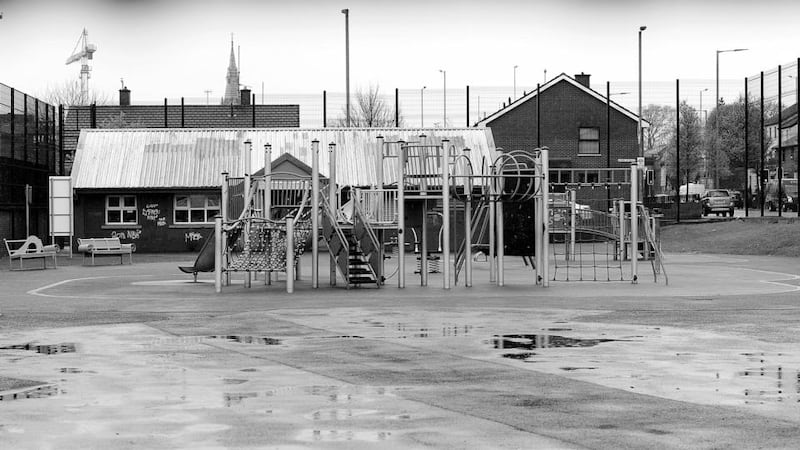
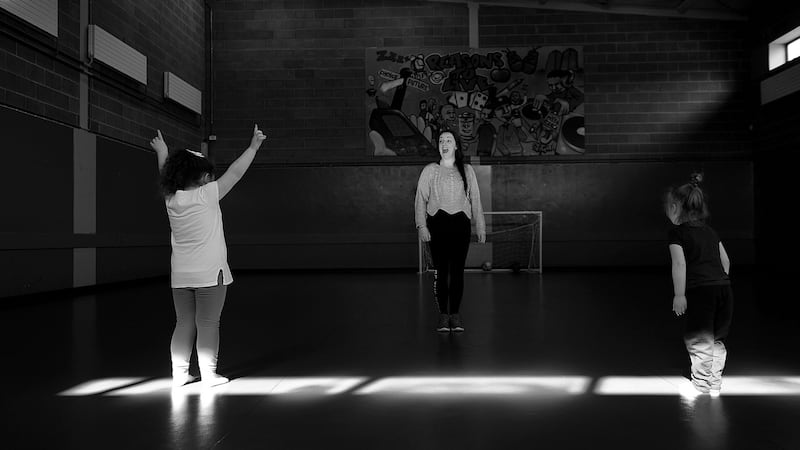
From then, measures taken to mitigate the worst effects of a massive overhaul of the British benefits system – welfare reform – introduced in 2015, will expire.
The department of communities estimates 126,000 households across the North will be worse off when the mitigation measures which have compensated families who would have been hit by the introduction of the new system known as universal credit end.
Fiona Ferguson, a community activist who is standing in next month’s local elections in north Belfast, for People Before Profit, says people will be “knocked for six” next March.
“You only need to knock on the doors in this area, or in Ardoyne or parts of Old Park. Everybody is either on [universal credit] or knows someone who is and no one has a good story. Food banks are running out of food because so many people have nowhere else to turn . . . The number of suicides is crazy.”
The other main issue raised is housing – overcrowding and homelessness. While nationalist New Lodge has almost 900 households waiting for social housing, neighbouring Tiger’s Bay has just 20, suggesting, say some, ongoing sectarian issues in housing allocation – an assertion rejected by the Housing Executive, which says there is simply a higher demand in New Lodge.














